Artificial Arcadia
Measured and adjustable(?) landscapes
Date
Dimensions
Material
Software
Supported by
Description
Artificial Arcadia: Measured and adjustable(?) landscapes is an artwork which was commissioned by the Swiss Arts Council Pro Helvetia as their headline exhibit at the Prague Quadrennial of Performance Design and Space 2019 (PQ19), as part of the Exhibition of Countries and Regions.
This interactive, cross-disciplinary installation is a collaboration between Fragmentin and KOSMOS architects. Through creating a performative scenographic landscape for visitors to individually explore or witness performances in, this installation calls us to consider how contemporary landscape entangles natural, artificial and digital realms. In this respect, it challenges our existing ideas of ‘unspoilt’ or ‘pure’ natural beauty as inherently flawed.
The design of the space is inspired by the aesthetic of Swiss man-made infrastructure such as tunnels through mountains, dams through rivers, irrigation systems, snow cannons, ski resort installations, avalanche protection and electrical networks. Visitors are invited into a naturalistic landscape mapped with ‘bauprofile’ markers: metal sticks or construction poles. In Switzerland, these political devices show the intended location of a future building. By mapping the construction site in advance, they announce a new piece of architecture and initiate any debates regarding this man-made addition to an area. In ARTIFICIAL ARCADIA, the poles are topped with a textile roof which makes the installation reminiscent of a Swiss mountain range. More specifically, this part of the construction references the huge white blankets placed over the Rhône Glacier to help prevent or more realistically slow down its melting due to rising temperature levels. They are just one example of how technology is utilised throughout Switzerland to help maintain its famed and heavily romanticised alpine landscape.
In the scenographic world of Artificial Arcadia, yet, what is normally a concealing covering becomes an elevated canopy allowing performers and viewers into the space that would, in the natural world, be occupied by the glacier. Through the grid of 5×5 motorized “bauprofile” that can move and position themselves at different heights, the installation is able to represent a large variety of snow level terrain. Every few minutes a new 1km2 area of the Alps snow level map (taken from Swiss Topo data) is randomly selected and translated into the 4x4m kinetic area of the artwork to create new icy-looking landscapes.
As people enter and move through the space, the poles slowly start to fall, informing them of the melting levels of ice and snow. Simultaneously, a real-time projection of the full digitalisation of the scene – The map of snow level, the thermal map of the visitors’ movement, the millimeters of snow displayed on small LCD screens –is used as a metaphorical way to raise awareness of the – sometimes unnoticed – impact and modifications people and infrastructure may cause in natural environments.
The project does not, however, stop at only considering how technology impacts nature. An understanding of how computational and digital technologies are used throughout the world to monitor, describe and visualise natural and non-natural phenomena is also key to the creators’ vision, as shown by the real-time digitalisation of what is taking place inside the installation during PQ19. ARTIFICIAL ARCADIA, therefore, demonstrates how the local is transcended by the global. Highlighting specific aspects of the swiss landscape introduces theoretical questions about climate change, technology and nature applicable to the entire planet.
For the duration of PQ19, ARTIFICIAL ARCADIA was home to constantly evolving specific performances by Camille Alena, created in collaboration with sound artist Stan Iorganov and young people from the Prague area.
Reflecting after the exhibition, Fragmentin has decided to continue its research on the topic by extending “Artificial Arcadia” in a printed object entilted "Val d'Arcadia": a map of the ice/snow level in the Alps created out of the visitors' data collected during the Quadrennial.
Details
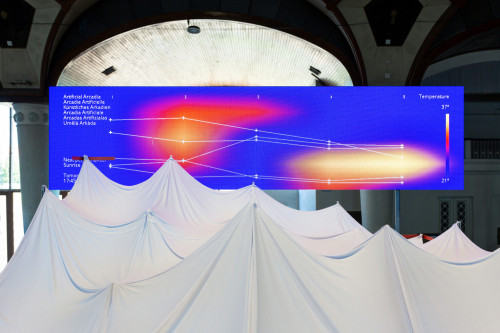
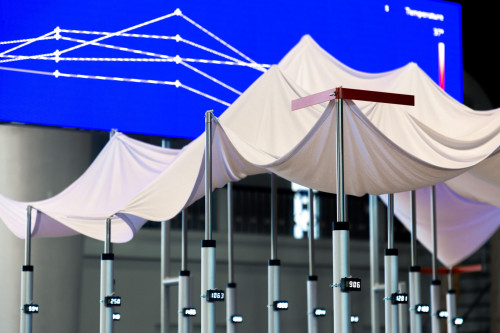
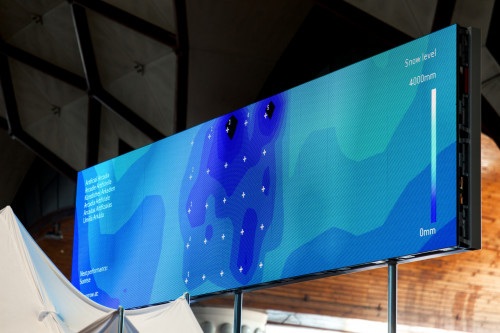
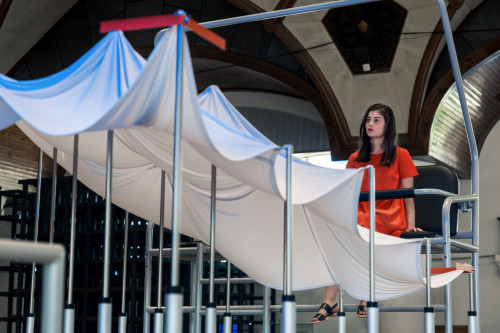
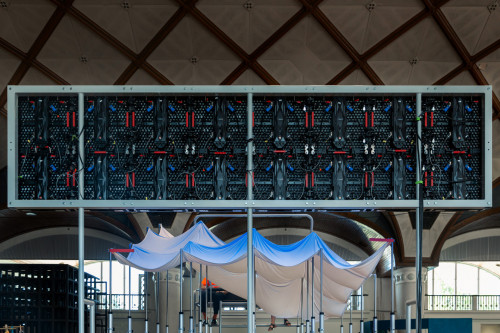
Installation view
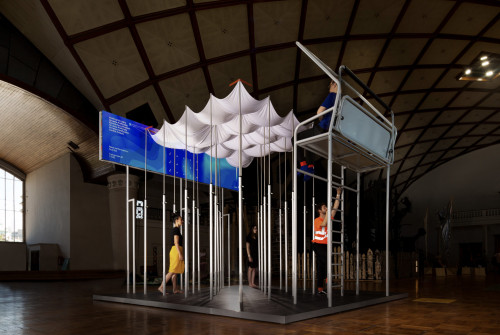
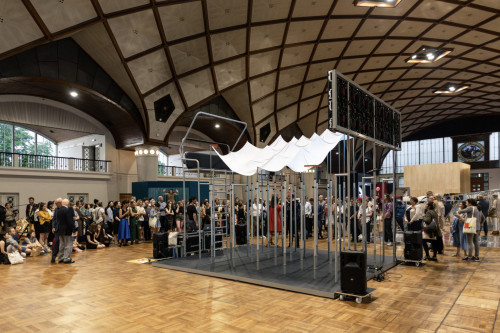
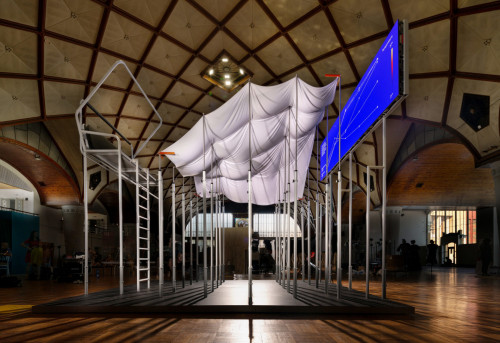
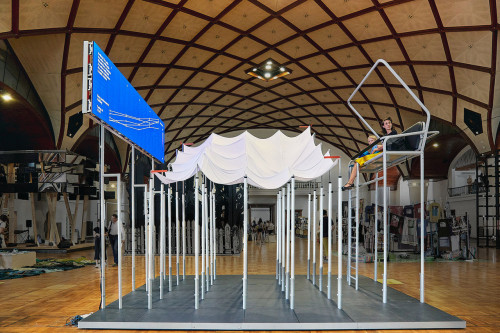
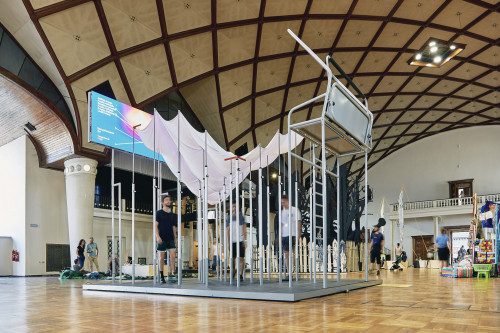
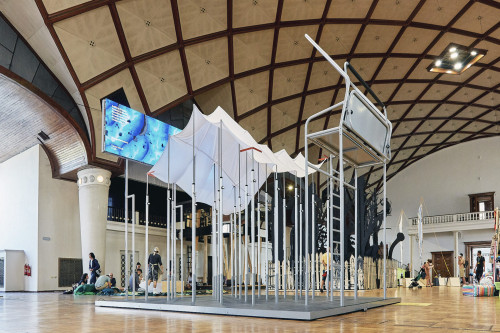
Performances
Camille Alena, Stan Iorganov and young people from the Prague area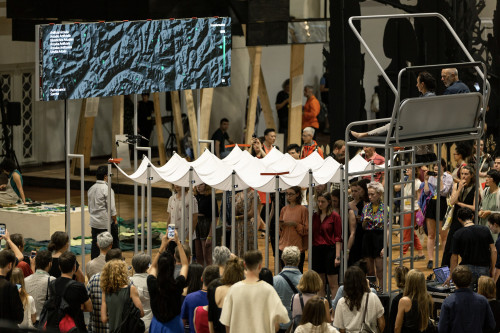
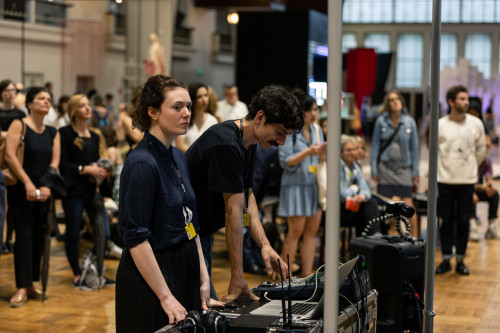
Videos
Exhibitions
Press
Contact
Thanks
Fondation Vaudoise pour la Culture
Swiss Cultural Fund UK
Pro Helvetia
Art Foundation Pax
HeK
Canton de Vaud
Ville de Lausanne
Ville de Renens
Migros pourcent culturel
Arts at CERN
Hospitalité artistique de Saint-François
Swiss Alpine Club SAC
MUDAC
Ars Electronica
Wilde gallery